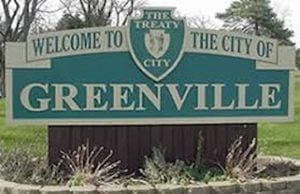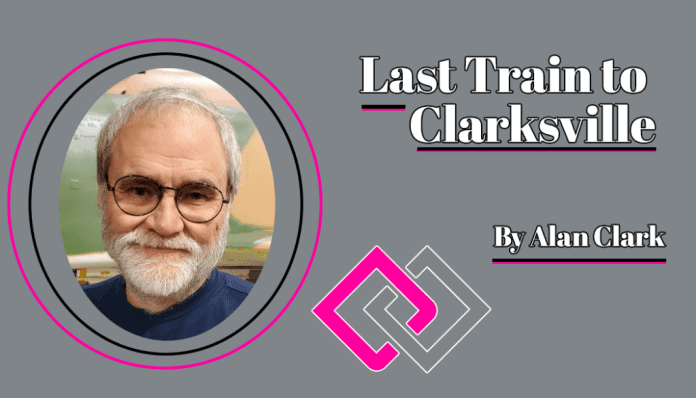I grew up in Greenville, Ohio. It was nirvana. It was safe. It was innocent, and it presented a pleasant and benign environment for raising a family . Greenville has been many things for many people. For those of us who moved on to different parts of the country/world, it provided a deep, rich, darke soil from which to sprout.
My Mother – Greenville
She was an old girl by the time I happened along; my mother, our mother, your mother, was born over two hundred years ago. She was around one hundred and fifty years old when I was born.
Yet, she was still young at heart. She almost doubled in size from nineteen hundred to my birth year, 1950. She was going through her adolescent period during much of my youth. She was young, strong, pretty, and healthy. She had a sunny future – she enjoyed the optimism of her youth. She was not cynical, nor was she jaded.
But much like an organ feels the suffering of a sick body, Greenville, could not escape the national pain associated with Vietnam and Watergate. Greenville thus entered her young adulthood a little bruised. Our national psyche had shifted. The optimism and growth of the fifties and sixties gave way to a different spirit, one less cheerful, one less trusting, one less hopeful.
I left my birth home in 1969 but continued to visit, oft times, for the next three decades. I watched Greenville age during this period. And I thought she aged well. She had grown gracefully into a middle-aged woman. She was still attractive, and she could still turn heads.
But I started coming back home less regularly beginning around the turn of the century. If we age around someone from year to year, on a daily basis, we don’t notice their wrinkles nearly as much as when we only see them every five years or so. This analogy seems fitting because over the past twenty years I started noticing Greenville’s aging process.
But the maturation process affects us all differently. Some people age well, others, not so much. Greenville is the home to many working-class folks, who are both well-intentioned and hardworking when good paying jobs abound. Like many small towns scattered throughout the Midwest, however, Greenville lost many of her manufacturing jobs not only at home but also in nearby towns and cities. When major manufacturing jobs left Dayton, permanently, it was not only Dayton who suffered, it was also towns like Greenville who felt the impact of solid jobs being shipped overseas, or south.
Dayton
Dayton is not the industrial powerhouse it was less than one hundred years ago. Dayton once produced more patents per capita than any other U.S. city in America throughout much of the 1900s. For example, Charles Kettering (inventor of the automobile self-starter) and air travel pioneers, like Wilbur and Orville Wright were all Dayton boys.
The U.S. economy following World War II was booming and Dayton employed the largest number of General Motors employees outside of Michigan. But Dayton’s assembly line work jobs eventually dissipated and then diapered.
But as a current resident of Dayton, I don’t view her future as bleak, and I hope Greenville residents feel the same optimism that I do, about their hometown of G-ville. I’ve watched Dayton’s economy diversify and morph into a service economy. Two major health care networks – Premier Health and the Kettering Health Network, combined, employ over twenty thousand employees. Wright Patterson Air Force Base continues to grow as a major hub for scientific research and employs over 25,000 people.
Also, one of Dayton’s large industrial companies (NCR) has evolved to meet the growing need of our nation’s information economy. NCR, while its presence has diminished, is now a high-tech company which continues to grow in this new direction.
Certain core centers of Dayton’s traditional manufacturing base were retooled and have become globally competitive. I discovered through a bit of research that in the early 1980s, more than 600 machine shops employed nearly 20,000 people. As the 1990s unfolded, though, this number had fallen off by half. But as the 21st century got started, the number of tool and die shops rebounded to over 15,000 jobs and continues to expand. Tool and die shops remain small, but they have become players in global trade and their productivity is up along with the wages they pay out.
Dayton’s economy may no longer represent the shiny new city on the hill with regards to its 20th-century economic leadership status, but our once regional powerhouse is demonstrating an amazing toughness and should serve as an example, to other cities.
Dayton has survived, in part, by building on its past successes. Its innovative manufacturing base is currently more tech-centric and service-oriented than prior.
I have lived in Dayton or close by, off and on, for the past ten years. And I’ve watched as she sprouted new wings. I’ve seen this phoenix struggle and strain to rise from her ashes. And it has been somewhat inspirational to watch her bootstrap herself into a more healthy and vital older but wiser gal of the twenty-first century.
In closing, I should note that I have not spent much time in Greenville over the past twenty years. And I honestly don’t know that much about her current-day economy, but I can only hope that it is improving and shifting with the new zeitgeist of the times?
I am a big fan of my hometown. And I would welcome some good news about her present-day recovery, future plans, and potential growth opportunities. Let’s talk about some of her many good qualities when I run into you at the fair.
When you look out over the horizon, let’s say ten years out, what do you see? Has Greenville retooled for her future? Is there a long-term game plan? Is there a vision to aim for? Are there past successes for her to build on?






